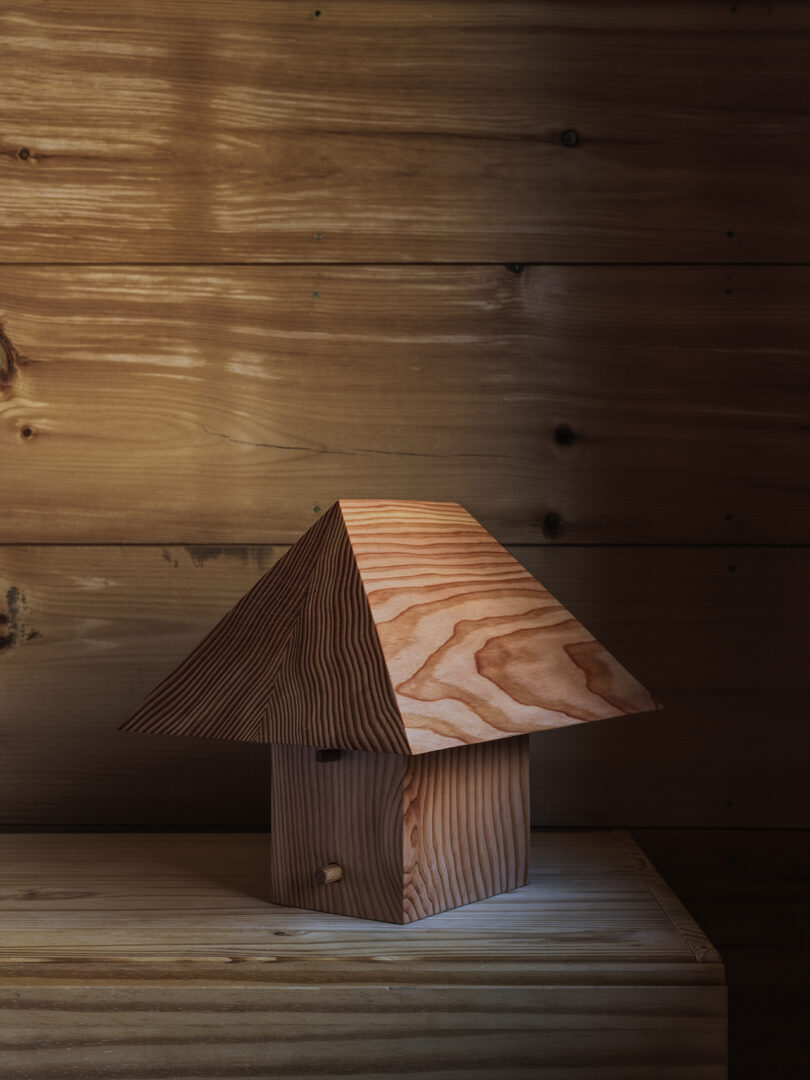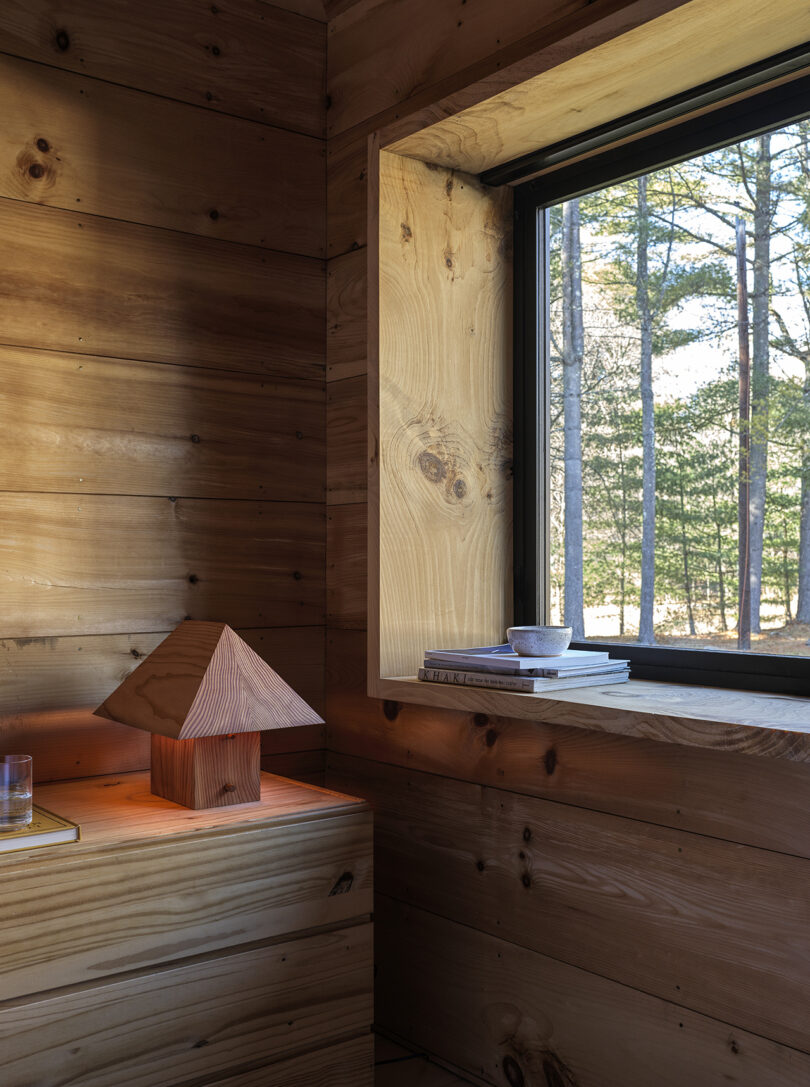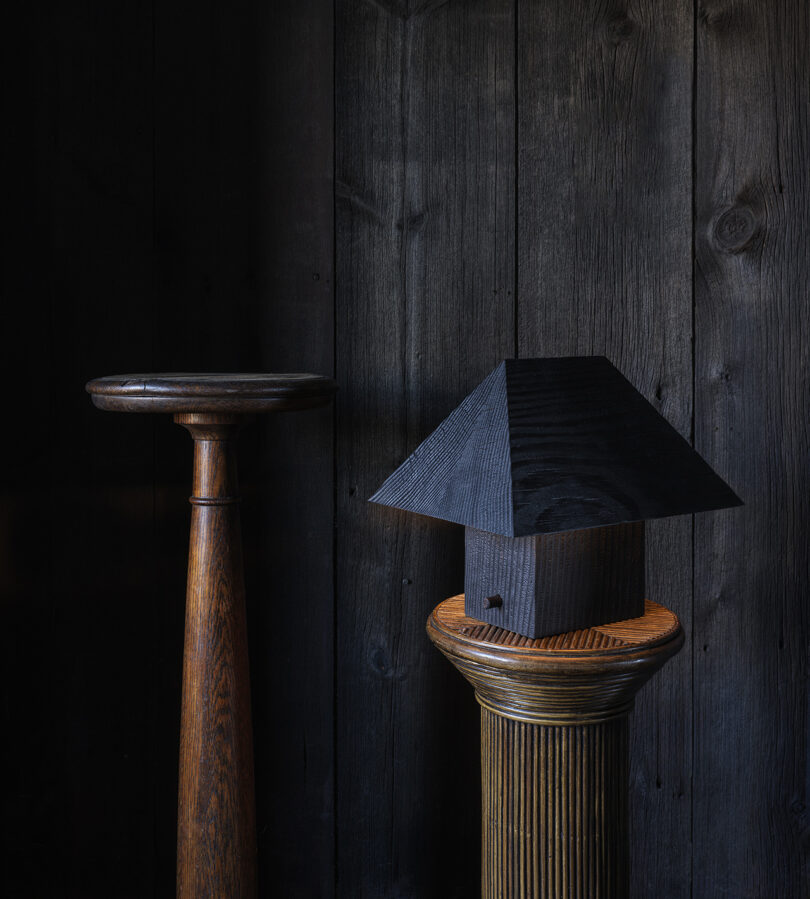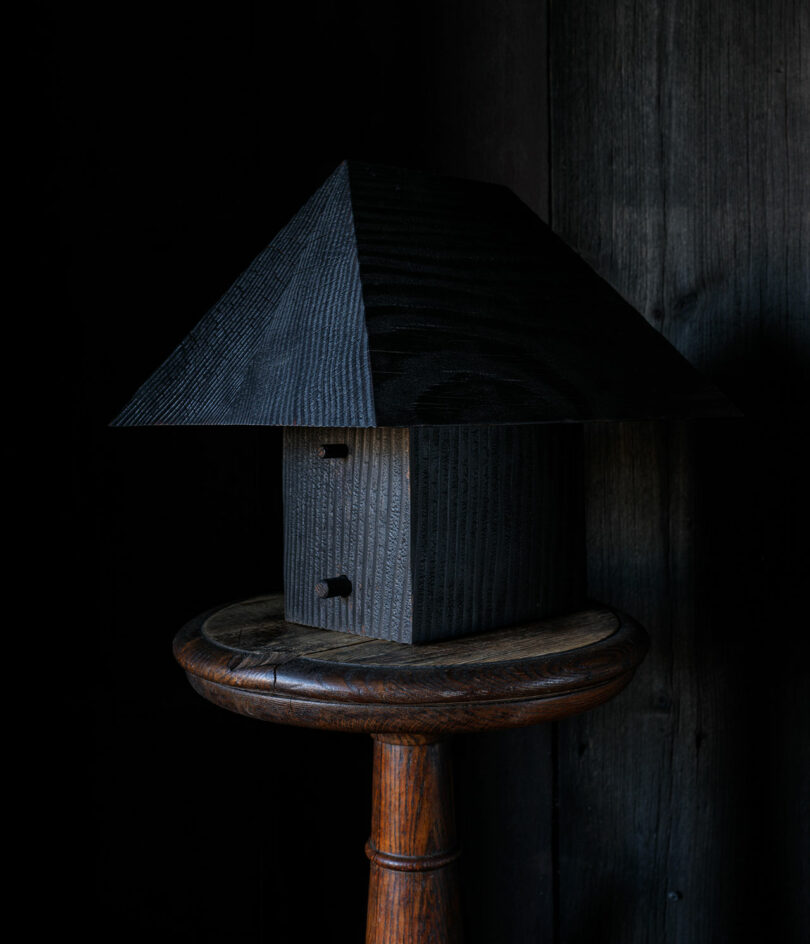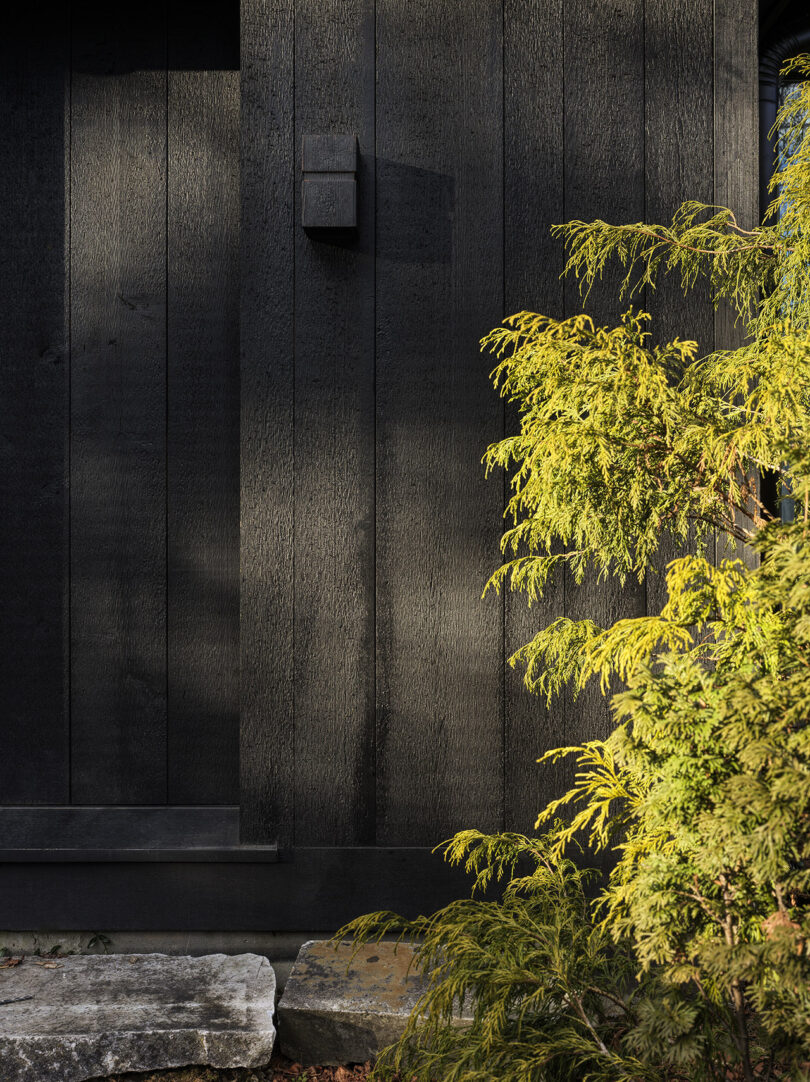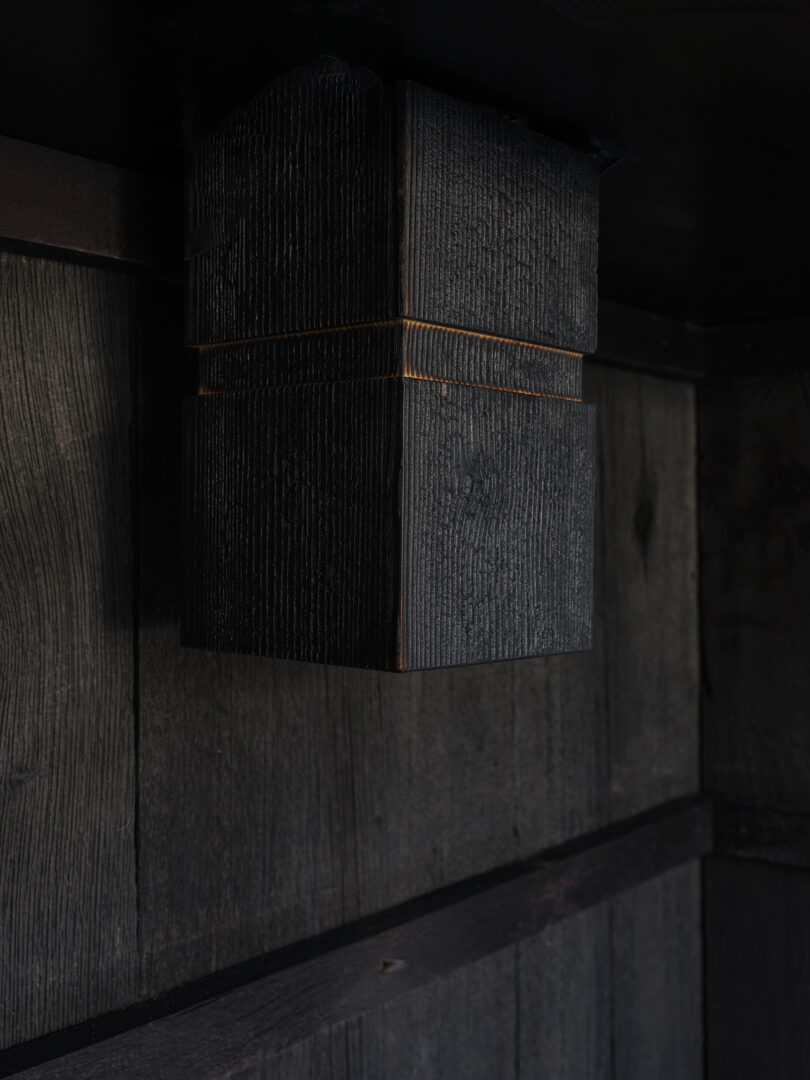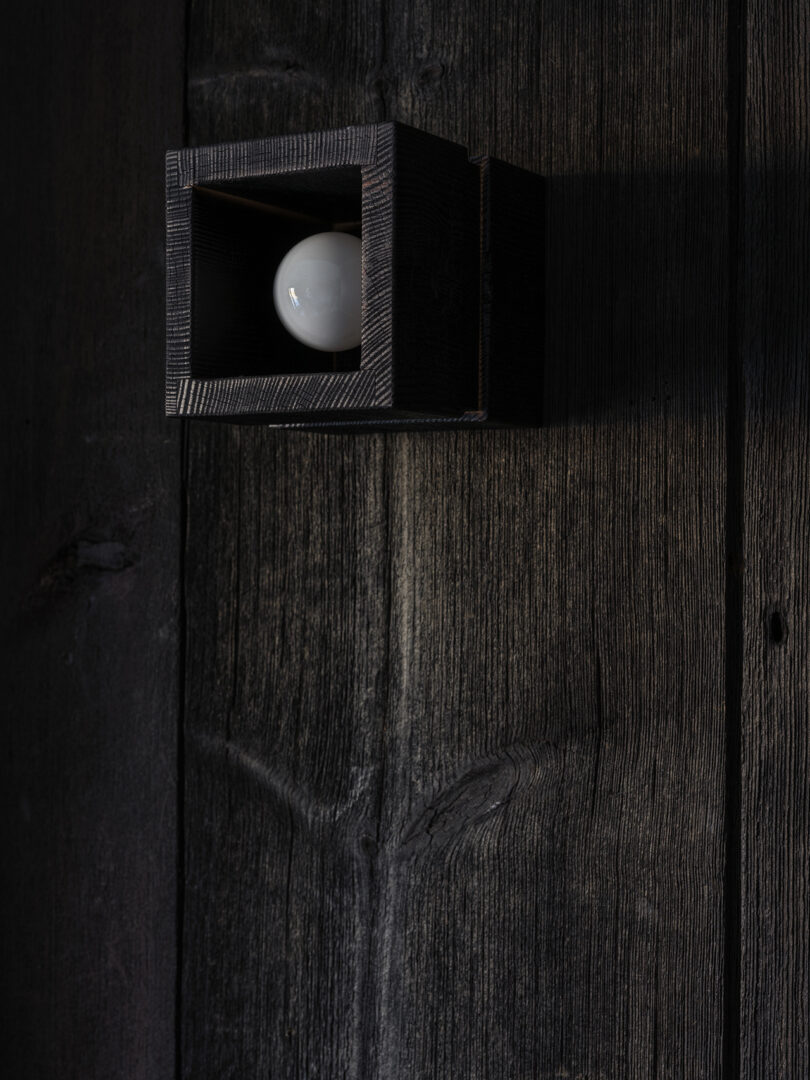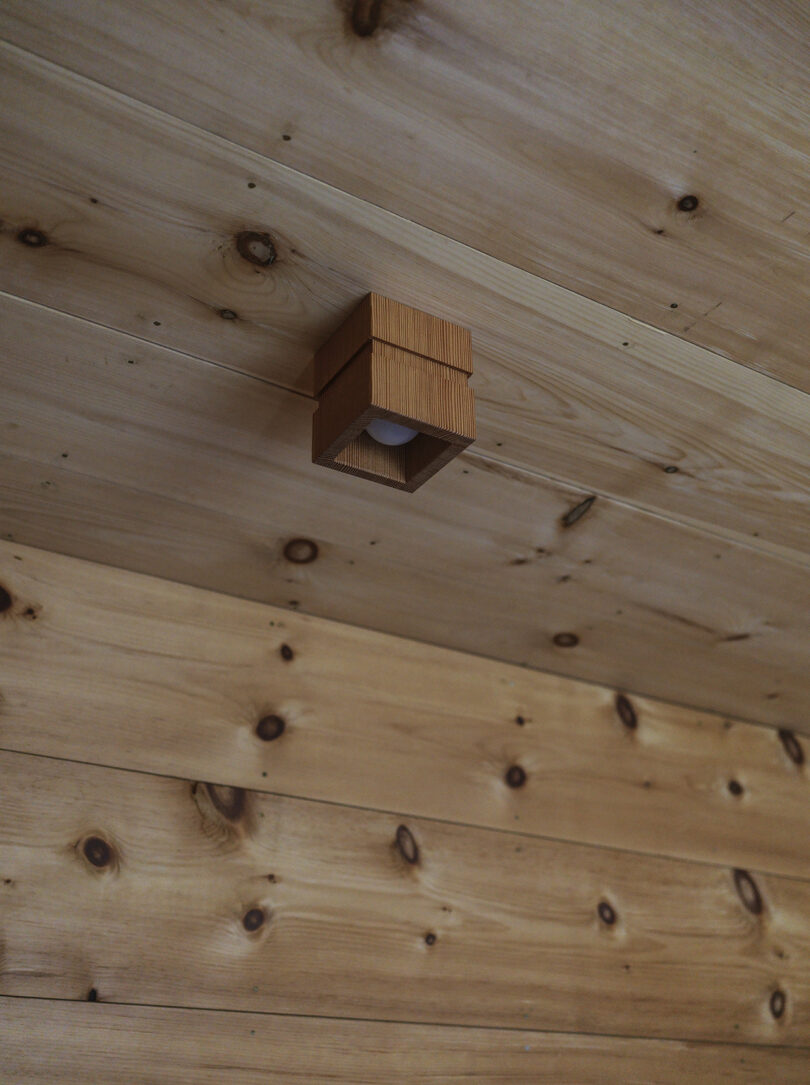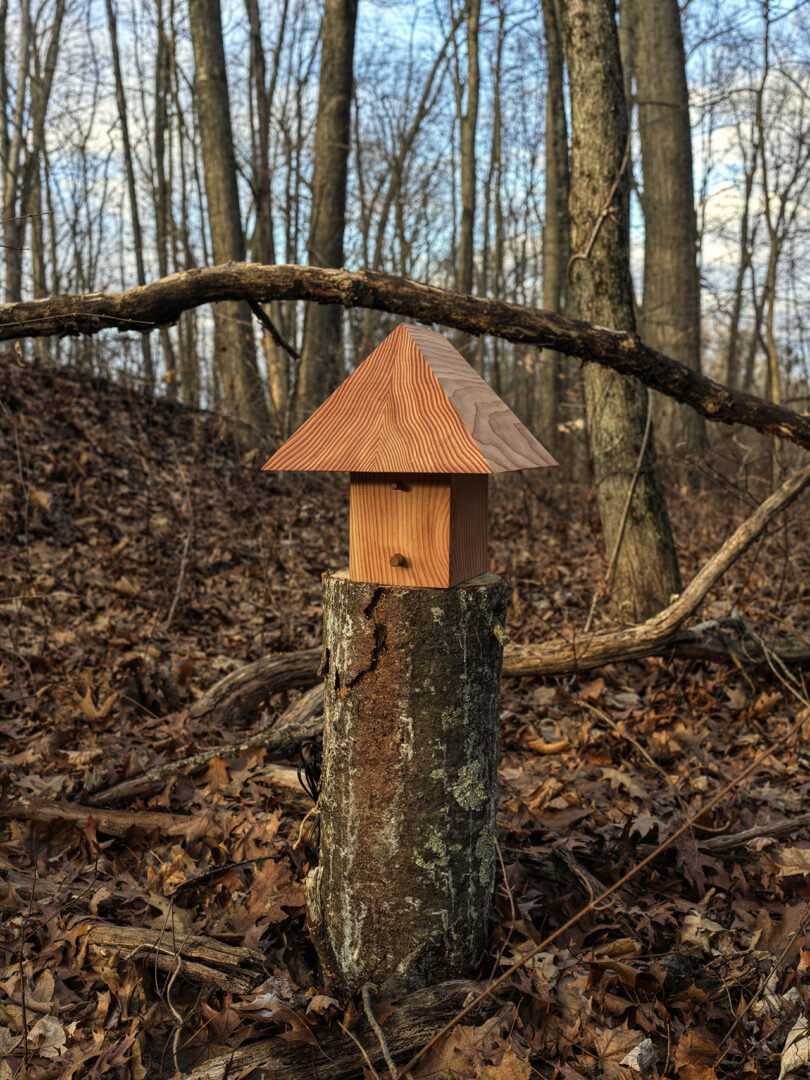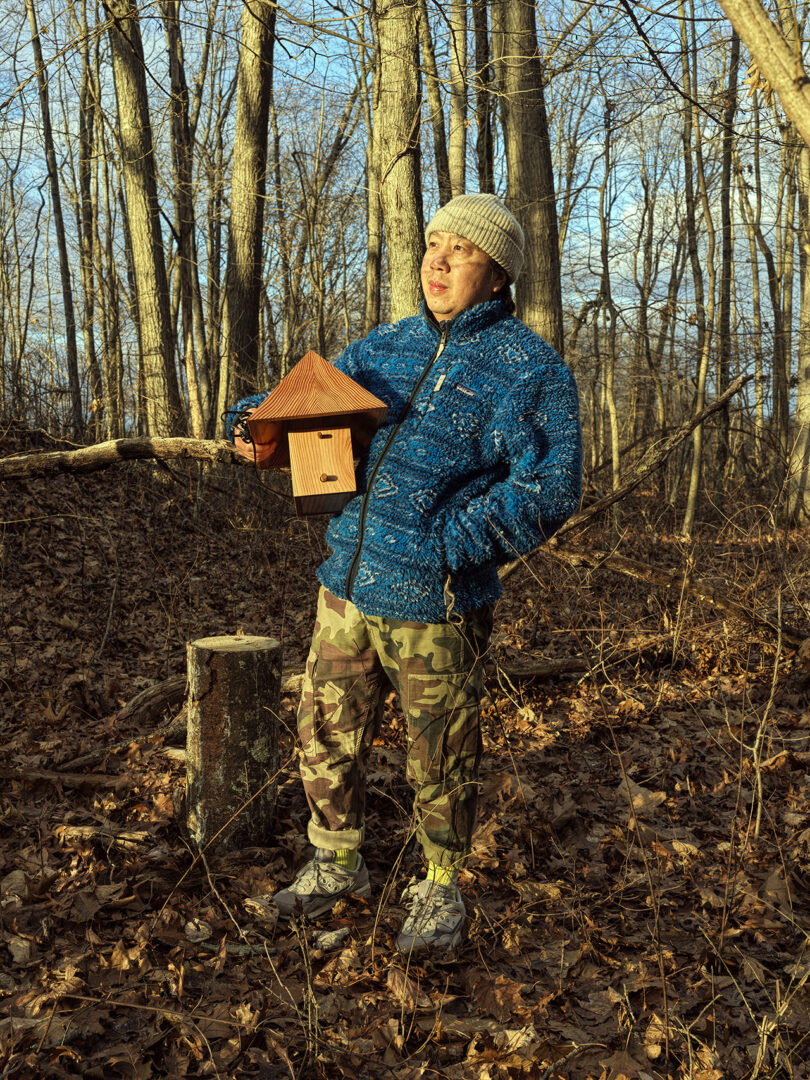A short walk in nature – just 20 minutes or less – has been shown to boost immunity and reduce stress. In an era where stress is increasingly pervasive, especially within work-driven cultures, safeguarding our minds and environments has never been more essential. This growing need is reflected in a renewed appreciation for natural materials, as both consumers and designers gravitate toward textures and colors that feel innately human. In response, Post Company has partnered with Idaho Wood to create the Ravine Collection of lighting to celebrate these materials in an honest way. “The collection’s simplicity of form mirrors its material expression, with indirect lighting sources accentuating the organic variations and unique character of each piece,” says Leigh Salem, Founding Partner at Post Company.
Bold, hefty blocks of wood showcase intricate growth patterns, while the collection’s Bauhaus influence adds a sense of structure and intention. Named after the last remaining forest in Brooklyn, the Ravine Collection of architectural wood lighting thoughtfully unites nature and nurture. The collection, which includes a table lamp and flush mount light, are offered in three distinct finishes: Douglas fir with heritage natural timber oil, western red cedar with natural timber oil, and yakisugi, a traditional Japanese wood-charring technique.
Showcasing ancient techniques of finishing, Douglas fir is finished with a natural timber oil, protecting the surface and offering a soft, satiny luster to the exterior. Next is a western red cedar, prized for its distinctive smell, oils, and natural antimicrobial properties. Frequently used in Native American rituals as a cleansing substance, its natural resistance to decay has associated it with anti-inflammatory and healing practices for centuries. Last but certainly not least, the ancient yakisugi technique is utilized to create an incredible charred finish on the wood. The outside is intentionally burned and sealed with oil to create a waterproof, weatherproof finish that highlights the distinctive growth patterns while also hardening the wood’s outer layer, a completely natural, protective yet distinctive finish.
In developing the Ravine Collection, Post Company and Idaho Wood were guided by a simple idea: creating sculptural armatures that not only illuminate a room, but also celebrate the raw character of the wood itself. Each piece in the collection, which is handcrafted in North Carolina, balances geometry and scale, offering a quiet interplay between form, function, and material honesty.
The table lamp is an architectural composition of two elemental shapes: a pyramidal shade perched atop a rectangular base. Both components are carved from solid blocks of wood, a choice that demands both precision in craftsmanship and access to materials of uncommon scale. A wooden peg anchors the lamping within the base, an intentional nod to traditional joinery techniques like mortise and tenon – methods once used in early barns and timber-framed structures. This peg motif reappears as the lamp’s dimmer, a tactile detail that subtly connects past and present. At night, the shade’s sharp form disappears into the dark, casting a soft glow that accentuates the base’s grain and silhouette – each lamp a quiet heirloom in the making.
The flush mounts continue this language of geometric restraint and material reverence. Designed for both indoor and outdoor settings, they consist of two stacked rectangular elements – echoing the table lamp’s proportions – with the lighting recessed to wash the inner wood surface in warm, ambient light. Available in three sizes (5″, 7.5″, and 10″), these ceiling and wall fixtures offer a subtle, grounded presence, bringing natural warmth to even the most minimal of spaces.
Beauty, elegance, and utility – all three coalesce neatly at the heart of Post Company’s ethos, providing a solid foundation on which to build. An award-winning design firm that launched in 2012, they work across hospitality, residential, and retail industries to provide a grounding, comprehensive approach to interiors. With exacting detail work that takes their projects to the next level, they work diligently within multiple disciplines to ensure an overall quality and solidity to their portfolio.
What began as a modest garage workshop in Sandpoint, Idaho, in 1975 has grown into a quietly influential name in American woodcraft. Idaho Wood, originally focused on handcrafting custom fixtures from western red cedar, has since relocated to Oxford, North Carolina, where it continues to evolve under the leadership of entrepreneur JT Vaughn. Despite its growth, the company hasn’t strayed from its roots – remaining deeply committed to meticulous craftsmanship and thoughtful design. For its first official design collaboration, Idaho Wood turned to Post Company, drawn by the studio’s shared dedication to enduring aesthetics, careful artistry, and sustainable values.
To learn more about the Post Company and Idaho Wood’s Ravine Collection, please ravinecollection.com.
Photography by Chris Mottalini.

